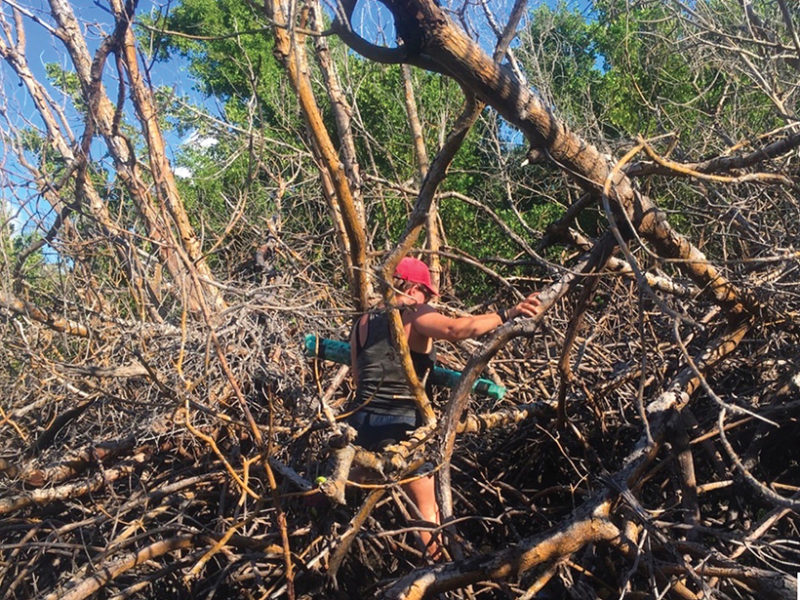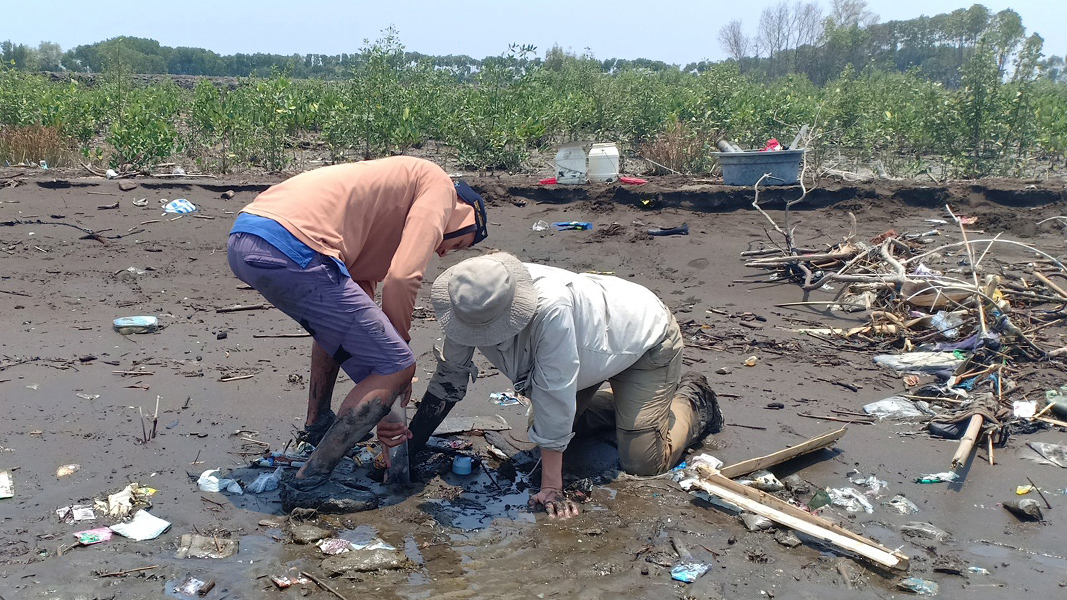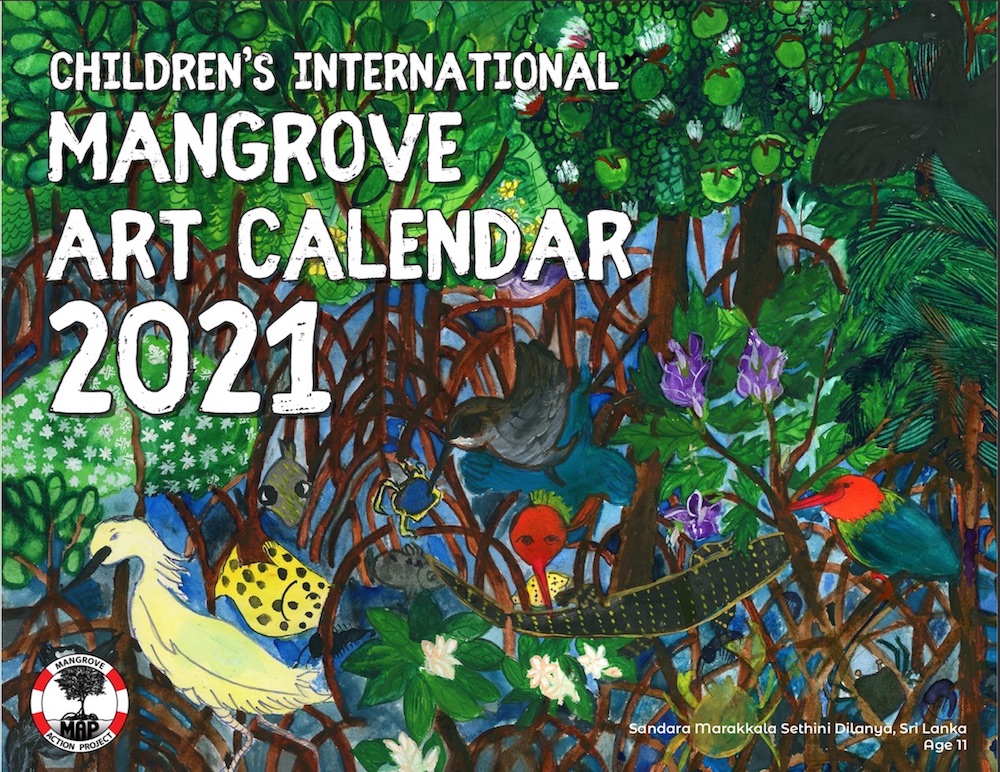Mangrove Action Project Named Winner of the 2020.ORG – Advancing Environmental Sustainability

USA – Public Interest Registry (PIR), the People behind .ORG, today named Mangrove Action Project as one of the 10 winners of the 2nd annual .ORG Impact Awards. The mission-driven organization was honored in the Advancing Environmental Sustainability category for its work to protect the world’s mangrove forests. For more information, please visit mangroveactionproject.org. Mangrove Action Project will receive a $5,000 USD donation to the charity of their choice and will be honored later today as part of the “10 Days of .ORG” online experience that celebrates the range of achievements that have healed, inspired, transformed and connected communities over the past year. Each day of the 10-day celebration placed a spotlight on an award-winning organization or individual making our communities a better place. More than 500 organizations and individuals submitted entries to the 2020 .ORG Impact Awards. Submissions were reviewed and scored by a panel of judges who are leaders in the Internet, non-profit and marketing sectors. READ MORE AFRICA Egypt’s mangroves project achieves environmental, climate, economic gains

EGYPT – Egypt’s national project to expand mangrove forests along the coast of the Red Sea is meant to improve the environmental conditions, address climate change risks and achieve economic gains, an Egyptian official told Xinhua in a recent interview. Funded by the Ministry of Higher Education and Scientific Research and implemented by the Desert Research Center and Red Sea Province, the project was launched in April with the aim of turning the coastal area into an outstanding tourist attraction, said Sayed Khalifa, director of the Mangrove Planting Project in Red Sea Province. Under the plan, Egypt will plant 210 hectares of mangrove trees along the Red Sea coast in Hamata, Safaga and Shalateen areas as well as Nabq Nature Reserve in South Sinai Province. Four plant nurseries were established to cultivate 50,000 seedlings every year, Khalifa said, adding 300,000 mangrove trees will be finally grown. “Mangroves currently cover an area of some 5,000 square meters across Egypt,” Khalifa said, noting the North African country is home to two types of the world’s 14 species of mangroves. The national project has also boosted ecotourism in the provinces of Red Sea and South Sinai, as most of the ecotourist attractions in Egypt are located in the two provinces, according to Khalifa. READ MORE AMERICAS Hurricane Maria Killed Mangroves Months After Storm

PUERTO RICO – When Hurricane Maria tore through the Caribbean in September 2017 as a category 5 storm, it destroyed livelihoods, infrastructure, and entire ecosystems. On the small island of Vieques, east of Puerto Rico, coastal mangrove forests were buffered from the initial onslaught of wind and seemed to survive. But after several months, huge numbers of trees died, leaving the coast more vulnerable to flooding and erosion from future storms. Research now points to a surprising cause for this delayed death: trapped freshwater left over from Maria’s intense rainfall, which disrupted the balance of salinity in the wetland. An overgrowth of mangroves in a poorly connected inlet on the island blocked this plug of freshwater in a connecting lagoon, which sentenced the mangroves to a slow, unsalty death. To quantify their observations, the researchers extracted sediment cores and measured turbidity and water levels in the mangrove lagoon and the inlet joining it to the ocean. Their sensors picked up restrictions in flow between the ocean and the lagoon, meaning that freshwater dumped by the hurricane might have been trapped in the interior wetland. When they analyzed the cores, the researchers found sandy deposits that predated Maria—potential evidence of a former inlet with better flow to and from the sea, said Griswold. READ MORE Mangrove bacteria turns sludge into bioplastics

USA – The United States generates seven million tons of sewage sludge annually, enough to fill 2,500 Olympic-sized swimming pools. While a portion of this waste is repurposed for manure and other land applications, a substantial amount is still disposed of in landfills. In the journal American Chemical Society (ACS) Omega, the researchers report that the bacterium Zobellella denitrificans ZD1, found in mangroves, can consume sludge and wastewater to produce polyhydroxybutyrate, a type of biopolymer for use in lieu of petroleum-based plastics. In addition to reducing the burden on landfills and the environment, the researchers say Zobellella denitrificans ZD1 offers a way to cut down upstream costs for bioplastics manufacturing, a step toward making them more competitively priced against regular plastics. “The price of raw materials to cultivate biopolymer-producing bacteria accounts for 25-45% of the total production cost of manufacturing bioplastics. Certainly, this cost can be greatly reduced if we can tap into an alternate resource that is cheaper and readily obtainable,” says Kung-Hui (Bella) Chu, professor in the civil and environmental engineering department at Texas A&M University. READ MORE ASIA New cases of mangrove die-off in Maldives

MALDIVES – The Save Maldives campaign finds the continuing culture of total disregard to environmental sustainability by the administration of President Ibrahim Mohamed Solih extremely disturbing, with infrastructure projects across the country causing catastrophic loss and damage to ecosystems. The Maldives experienced its worst environmental loss and damage during the administration of President Yameen Abdul Gayyoom, which we observe is being continued unchanged, by the current administration. On 11 February 2020, the Environment and Climate Change Committee of the People’s Majlis produced a report motivated by the current erosion crisis occurring across the Maldives, to call on the international community to expedite efforts to address global climate change. On 12 February 2020, using the report, the Majlis voted on a motion for the Maldives to declare a “climate emergency”. Despite the adoption of this declaration, the Majlis continues to fail to hold the government accountable for engaging in ongoing business-as-usual environmental destruction, as demonstrated by the case of Maafaru airport expansion. The continuation of irreversible destruction of ecosystems in Maldives while simultaneously declaring a national “climate emergency” makes a mockery of the State’s own obligations and commitment to climate action to address the climate crisis. Despite being among the first nations to become party to the UN Convention on Biological Diversity in 1993 to conserve and sustain biodiversity, Maldives is failing in its commitments to protect nature, while also flouting its commitments to the UN sustainable development goals. READ MORE Plastic waste smothering vital mangrove forests of Java

INDONESIA – he coastal mangrove forests of Java, which provide natural protection against erosion, are being suffocated by vast swathes of plastic waste. New research from the Royal Netherlands Institute of Sea Research (NIOZ), led by researcher Celine van Bijsterveldt, finds that without better waste management, restoration of this green protection belt is impossible. Van Bijsterveldt has been monitoring the accumulation of plastic waste in Indonesian mangrove forests for many years, describing them as ‘a perfect plastic trap.’ Household waste, carried from the inland to the coastal area by local rivers, gets stuck in the last stronghold between land and sea. In areas completely covered in plastic, trees suffocate. “On average, we found 27 plastic items per square metre,” said van Bijsterveldt. “The roots change course when they are obstructed. They grow around the plastic. When half of the forest floor is covered, the tree still gets enough oxygen to keep its leaves. We’ve seen roots stuck inside plastic bags. Trying to find a way out, they just grow in circles. Eventually trees that cannot outgrow the plastic die.” At several locations along the northern coastline of Java, plastic covered half of the forest floor and was found buried as deep as 35cm inside the sediment. Plastic that has been ensnared in these upper layers further decreases access to oxygen for the mangroves. READ MORE Tide turning for Mekong protesters

THAILAND – After almost two decades of campaigning against hydro-dams and water projects built on the Mekong River, local civic groups and conservationists finally launched the “Mekong People’s Forum,” with the hope of moving their campaign to a policy level. The forum was held on Dec 1–2 in Chiang Khong district, and attended by 200 people including local villagers, conservationists, journalists, and the US and Australian embassies in Bangkok. The Mekong People’s forum is the name not just of the event held last week but also a movement of civic groups located in eight provinces. In the past, these groups had no name but they have now come together under the general name “Mekong People’s Forum.” The organiser also had extended an invitation to the China embassy in Bangkok, as the country also built 11 dams on the upper stretch of the Mekong River, and the Lancang River in Chinese territory. READ MORE Ministry looks into tycoon’s right to 400ha of mangroves

CAMBODIA – The Ministry of Agriculture, Forestry and Fisheries is investigating whether a tycoon has the right to occupy more than 400ha of flooded mangrove forest in the Chrolong community area in Teuk La’ak commune in Preah Sihanouk province’s Prey Nop district. The investigation follows a series of local media reports alleging that tycoon Hann Khieng, who holds the honorific oknha title, received 28 land titles for the more than 400ha even after the government reclassified it as state-owned private land to be allocated for 26 families in 2017. Ouch Vutha, director of the Fisheries Department under the agriculture ministry, told The Post on December 15 the ministry had set up a working group to gather documents related to the tycoon’s occupation of the flooded mangrove forest. “First, I will check the titles to see if they are related to that location and determine whether they affect the mangrove forest. I will also check whether they affect the community. So it is too early for me to comment further on it until the documents are collected and checked first,” he said. READ MORE Expanding mangroves

PAKISTAN – Pakistan is the only country in the world to have increased the mangrove cover, a recent study has revealed. The study conducted by the Worldwide Fund for Nature-Pakistan in collaboration with Institute of Space Technology and Society for Environment and Mangrove Protection and Welfare Association shows that Pakistan has increased the area under mangrove trees over the past 30 years In 1990, mangroves were spread over an area of 477 square kilometres and now they cover an area of 1,463 square kms — a significant increase of 300%. This is indeed an achievement considering the fact that mangrove forests across the world are disappearing. Since 95% of the country’s mangrove forests are in the Indus delta in Sindh, the credit for the spectacular achievement goes to the provincial government and non-governmental organisations. The mangrove cover in the Indus delta has increased by 986.36 over the past three decades, expanding by 3.74% on an average annually. In Pakistan, two of the eight indigenous species of mangroves have become extinct. Mangroves have disappeared mainly as a result of human activities such as cutting mangrove trees for firewood, grazing and overfishing. Climate change too is contributing to the destruction of mangroves. READ MORE EUROPE EU grants €9.9m to FDA and WIA for wetland conservation

EUROPEAN UNION – In West Africa, wetlands, especially mangroves, are increasingly threatened by human activity. In order to conserve these areas, which are nevertheless rich in biodiversity, an awareness-raising programme will be implemented by various actors in the sub-region, and financed via a €9.9 million grant from the European Union (EU). “Awareness-raising”. This is the solution advocated by Liberia’s Forestry Development Authority (FDA) and Wetlands International Africa (WIA) to save West Africa’s wetlands. For many years, these natural spaces, which are essential to the proper functioning of the ecosystem, have been weakened by man through pollution and overexploitation. However, these areas composed of mangroves absorb about 50% of the carbon dioxide emitted by human activities. They also serve as breeding grounds for many species of fish and other aquatic animals. The FDA and WIA have received €9.9 million from the European Union (EU) to carry out their awareness-raising programme. The grant was awarded following an application issued on December 5th, 2020 by the two institutions. A total of nine West African countries will benefit from the wetland protection and conservation project which will be implemented by different stakeholders. They will have to submit their action plans before receiving the funding. READ MORE OCEANA Mangroves lock away carbon

AUSTRALIA – High levels of dissolved calcium carbonate present in their bedrock indicate that Red Sea mangroves are capable of removing more carbon than previously thought, KAUST researchers have found. The study’s findings highlight the need to consider calcium carbonate dissolution in mangroves growing on carbonate platforms as an important carbon storage mechanism. Blue carbon ecosystems, such as mangroves, saltmarshes and seagrass beds, sequester large amounts of carbon dioxide (CO2) from the atmosphere in the form of organic carbon locked in their soils. In the Red Sea and much of the tropics, mangroves grow on calcium carbonate sediments formed by shells and skeletons of marine organisms dating back to the Pleistocene, about one hundred thousand years ago. The dissolution of calcium carbonate in seawater is a source of total alkalinity, which increases the ocean’s capacity to store CO2 from the atmosphere. Previous research has found that the relatively small mangroves of the Red Sea bury ten times less organic carbon in their sediments than the global average for mangroves. These studies, however, did not examine dissolved calcium carbonate as a carbon sink — a concept that had been previously hypothesized but not quantified, until now. READ MORE
FEATURED VIDEO Mangrove Rangers advocate for the ‘heart of Cayman’

LAST WORD  Hi MAP Team Here I am sending a photo of Gouras from Greece. First calendar that reaches internationally to a winner of 2021 calendar. He is 11 years old. So talented and intelligent, with a great smile. Monica Like this newsletter?
Pease consider donating to MAP to keep it going.
Giving could never be easier  | FEATURE ACTION ALERTTell the Japan International Cooperation Agency not to fund polluting coal – TAKE ACTION
MORE ACTION Our Paradise and Sovereignty under Siege – Protect Grenada from Destructive Development! SIGN THE PETITION Stop the destruction of Can Gio Mangrove Biosphere Reserve
SIGN PETITION (Scroll down in linked page for English version)Please SIGN: keep plantations out of orangutan habitat!
TAKE ACTIONUnilever: stop destroying mangroves for convenience food! SIGN OUR PETITION
Stop plundering the oceans for industrial aquaculture! SIGN THE PETITION
NOW TAKING ORDERS!
ORDER YOURS!

Like this newsletter? Pease consider donating to MAP to keep it going. Giving could never be easier
Please see our newest video: “Restoring The Natural Mangrove Forest”
WATCH VIDEO 
Restoring The Natural Mangrove Forest
Watch movie 
Community Based Ecological Mangrove Restoration in Rufiji Delta VIEW VIDEO Video: Mangroves for the Future – A look bacK. As the latest phase of Mangroves for the Future (MFF) draws to a close, this video highlights some of the project’s most successful initiatives – from local women supporting national park management in Viet Nam to an island in the Maldives that has become a model for waste management, and everything in between. View Here WANT TO GET INVOLVED?
Follow and Join MAP!    
Like this newsletter? Pease consider donating to MAP to keep it going. Giving could never be easier 

Singing for the Sundarbans WATCH HERE Entrevista con Monica Quarto del Mangrove Action Project (Spanish language) Oye Aqui
VOLUNTEER OPPORTUNITY 
MANGROVE ISSUES Want to learn more about mangroves?
Our short presentation will give you a better understanding of the issues we are working to solve. WATCH PRESENTATION What is CBEMR? Download MAP’s 2 page CBEMR Information Sheet containing links to all MAP’s CBEMR resources – CLICK HERE
View MAP’s uploaded Videos at
MAP Video Gallery Question Your Shrimp Consumer/Markets Campaign!
WATCH VIDEO Mangroves: Guidebook to Malaysia – Click Here SHARE MAP’S VISION
CLICK HERE to watch short introductory video. Together we can work “at the roots of the sea”. Our short documentary, Reducing the Risk of Disaster through Nature-Based Solutions : Mangroves

Marvellous Mangroves Curriculum The Marvellous Mangroves Curriculum begins with a simple philosophy – getting future generations to not only learn about, but understand the importance of mangrove forests. VISIT 
The award-winning Marvellous Mangroves (MM) curriculum educates children on the importance of mangroves and their ecological functions, teaching them about modern challenges and mechanisms for sustainability. VIEW VIDEO Marvellous Mangroves Curriculum in Bangladesh – WATCH VIDEO
MARVELLOUS MANGROVES IN BRAZIL
En Portuges 
Marvellous Mangroves – A Curriculum-Based Teachers Guide.
Like this newsletter? Pease consider donating to MAP to keep it going. Giving could never be easier 
“Question Your Shrimp” Campaign Question Your Shrimp – is it really sustainable? Sign the Petition
Note to Our Readers: We strive to keep active links in our newsletter. However, due to circumstances beyond our control, occasionally links to stories may become broken. If you find a link to a story is not functioning, please cut and paste the headline into your browser search bar. In most cases you should be able to locate the original story.
Not yet a MAP News subscriber?
Click here to subscribe. 
|




























